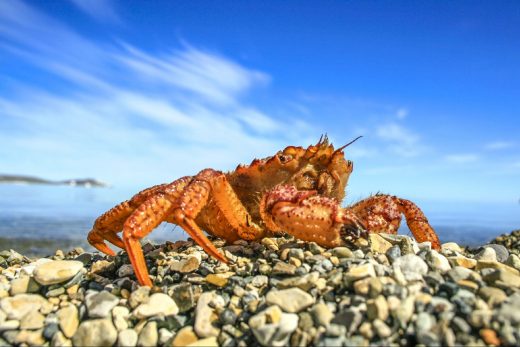
That’s right, it’s another Weekly Bites on climate change.
Climate change affects our food supply profoundly, which has a ripple effect on the hospitality industry. From novel ways to combat climate change, to different ways of consuming food, and what foods to avoid, we continue to cover stories on climate change to give you a leg up on an ever changing world.
Read on for three current stories on how climate change is affecting the hospitality industry.
Alert! Snow crabs have disappeared
If you serve snow crabs at your restaurant, then this is old news.
And if you’ve been considering adding them to the menu, then we’re sorry to say, there are none left.
Billions of snow crabs have “disappeared” (died) from the Bering Sea in the past few years, due to unprecedented heat back in 2019.
Snow crabs have adapted to ice covered waters. When the average temperature increases by even one degree, it increases the metabolism of the tasty crustaceans. This, in turn, means they don’t have enough food, and they starve. Which also means they aren’t reproducing — and you can quickly see how serious the situation is.
To make matters worse, warmer waters mean that more predators (of the non-human variety) that eat the snow crabs are making their home in the Bering Sea.
It’s not only the crabs we feel bad for — the human economic impact is widely felt in Alaska. Crabbers, whose livelihoods depend on catching snow crabs, are left wondering what’s next. The decline of the snow crab populations isn’t a result of overfishing, so this sharp decline is a warning to even the most responsible of fisheries.
Is cheese the answer to climate change?
Cheese is the answer to a lot of our woes, but is it possible that it’s also the answer to climate change?
Probably not, but the cheesemakers of Vermont are trying to do their part to remain resilient despite climate change.
Cattle are huge producers of greenhouse gasses, so the idea of sustainable, carbon-neutral cheesemaking is not simple. Even still, small and large cheesemakers are exploring new ways of continuing their craft.
We’ve been eating cheese for 11,000 years, even in times of warming temperatures. We can produce dairy in even the driest of deserts. Because of this long history, and because Americans love cheese, the Vermont cheese industry is not giving up on its vision of climate-resilient cheesemaking.
A big part of this effort is to creatively use the byproducts of cheese, like whey. Some cheesemakers are composting whey along with the paper they use to collect the cheese curds, while others are focusing on using more biodegradable packaging.
If the rest of the world takes note of what Vermont cheesemakers are doing, then perhaps we can ensure that cheese sticks around a while longer.
Climate-friendly agriculture means more food
Sustainable farming practices are less expensive in the long run, but implementing them costs a lot of money up front. That’s why the Agriculture Department is supporting farmers that want to transform their farming practices to be fully sustainable and carbon-neutral.
The hope is that we can produce more of our food in a sustainable way, without the typical high price tag associated with sustainability and other buzzwords.
Farmers are using methods like planting clover to cover soil and prevent its erosion during the off season, which then attracts monarch butterflies. Instead of tilling the land, which requires costly and gas-guzzling equipment, farmers are focusing on keeping their soil healthy throughout the year. Rotational grazing can help reduce reliance on store-bought feed and improve health for cows.
Besides being better for the environment, farmers are saying that these methods are increasing their yields and producing better tasting food. This may be a rare moment where we can have our cake and eat it too — that is, save the environment and increase the amount of quality food we produce. The hope is that, in the long term, these practices will reduce the overall cost of food, both to consumers and restaurants.


